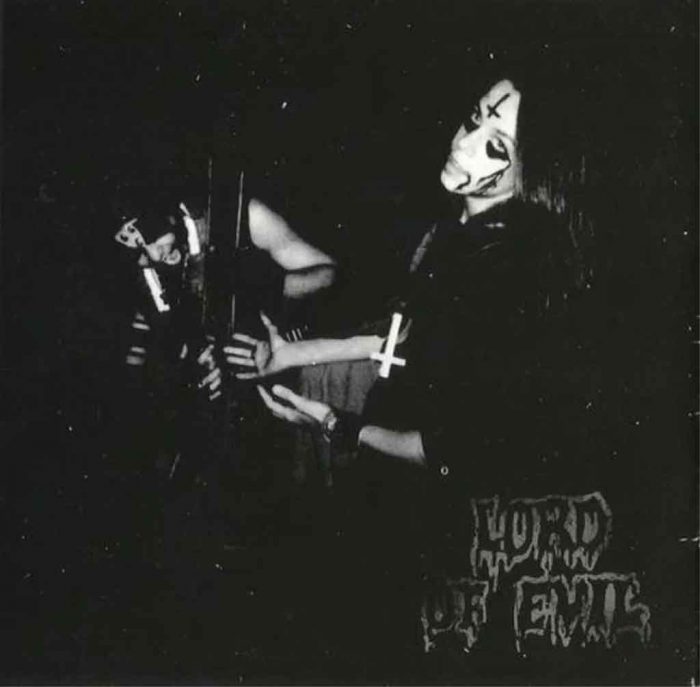Garage-level bands are usually condemned to the usage of the same rudimentary forms which causes their music to be dominated by the distorted guitar which constitutes the common ground for metal, hardcore, grind and oi. But at the same time there is often a struggle to somehow project desired message into those almost universal, objective structures with only small variations, just as Hellhammer was struggling with confinements of the form, despite being wholly avant-garde in its visions. And it seems that if there is truly a will, it will successfully color those rudimentary structures with desired character.
On its four demos Lord of Evil communicates through simple successions of power chords or tremolo picked and blast beat ridden outbursts of energies, from time to time letting the eerie atmospheres to seep through the usage of chromatic changes to a power chords, a technique which Scandinavian innovators were already utilizing like a self sufficient language. Just as with Hellhammer, the riffs, when taken individually are indistinctive, unappealing and their placement in the sequence doesn’t seem especially justified, but they push the songs toward realization through the device of storytelling with the conflict, contrast, and eventual complementary unity of these riffs.
The music is very basic metal, slightly updated as the Scandinavian styles became defining for the genre, but one that never left the realm of the raw and unrefined. And yet, for music with that kind of intent it is simply better that way as this style never actually took off from this level in any meaningful way and generally stays true to the ultimate phenomena which it represents much better than the directions into which “serious” occult bands tried to take it. What is most important is that it isn’t devoid of mystery. As it opens up to be more complex than it may sound at first, the questions behind its choices and seemingly half realized ideas are starting to force themselves upon the listener, urging him to pursue the eventual meanings behind them.
Being as alienated and unthinkable as it gets, it is funny to think that this band could actually rub its shoulders with Behemoth back in the day. Nevertheless, despite its limitations Lord of Evil understood forbidden ideas circulating at the time and not only expressed them in an almost symbolic way, but already in this embryonic stage contained their revision, which only later became so apparent in the philosophy of projects like Zyklon-B. The band also avoided the fall into the abyss of nothingness and impotent negativism, which often result from arriving at such conclusions, by reaching through self to hold onto something supra-personal, which reconstitute, reinforce and legitimately elevate otherwise very shaky and insignificant Self. It tends to open unique potential completely foreign to modernity, although for Lord of Evil it remained used mostly against rather that towards something.
Short life of this musical entity ends with the last track on the “Satan’s Soldiers” demo. “Evil Spirit of Destruction” reads like a mash-up of song titles from Burzum’s debut, and sounds like it took some musical clues from a rare track called Et Hvitt Lys Over Skogen, but in an essence, it’s a miniature of “My Journey to the Stars.” There, in a sudden change in music, it is hinted at what order shall rule in the aftermath of releasing titular destructive power, and thus, to what ends is all this blaspheming, inversion and hate. Not long after that, in a really unnecessary move, Lord of Evil changed its name to WAR 88, way too easily allowing for the reduction of its ideas and being pinned down on simplistic and ill defined political spectrum. The legacy of this lineage, however, lives on. Not only in NSBM, but in every dissident and far reaching underground black metal like the traditionalist oriented Infamous or Autarcie.
Tags: Black Metal, lord of evil, nsbm



Fantastic and detailed article.
Trying to wring the most of these primitive early sounds is often a fascinating thought exercise, the confusion of the nascent and rebellious youth who have recreated themselves as outsiders, questioning the increasing decay of modernity through a wide variety of lenses.(varying by person and environment) The thoughts one has as a teenager on the outside are often profound and barbaric and that can be reflected through art